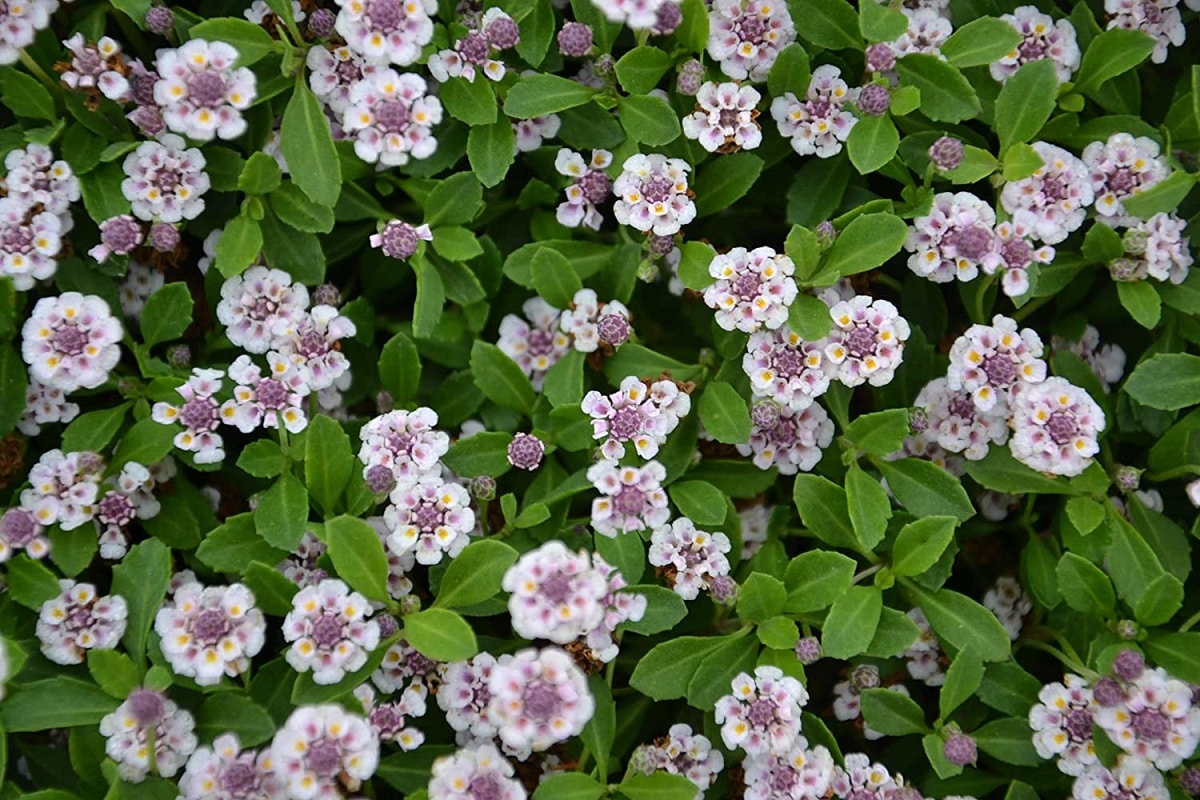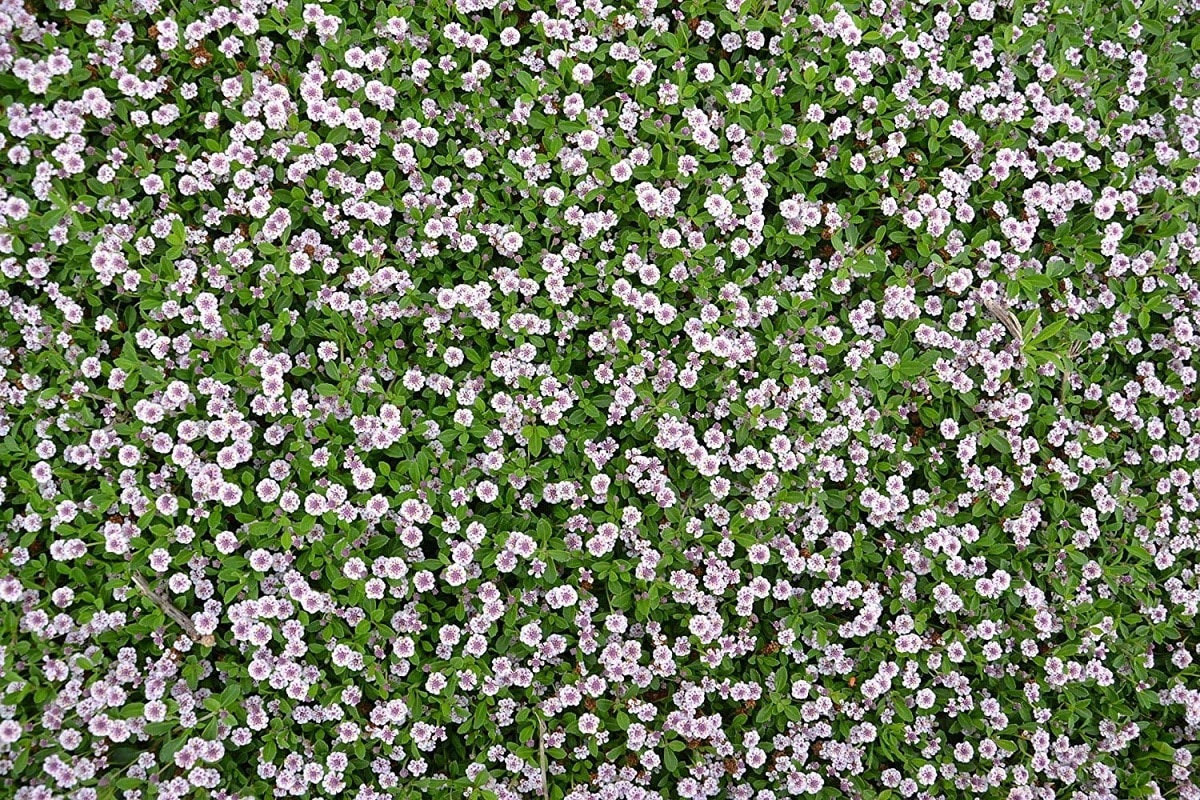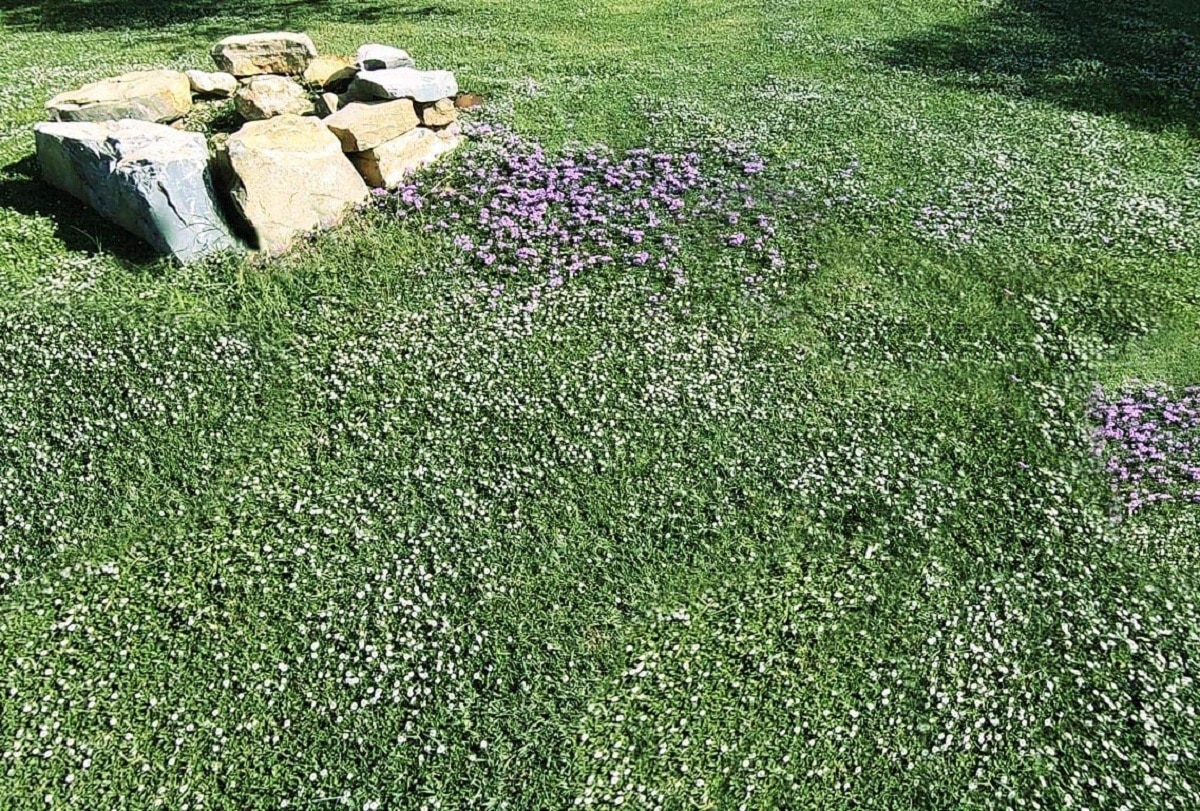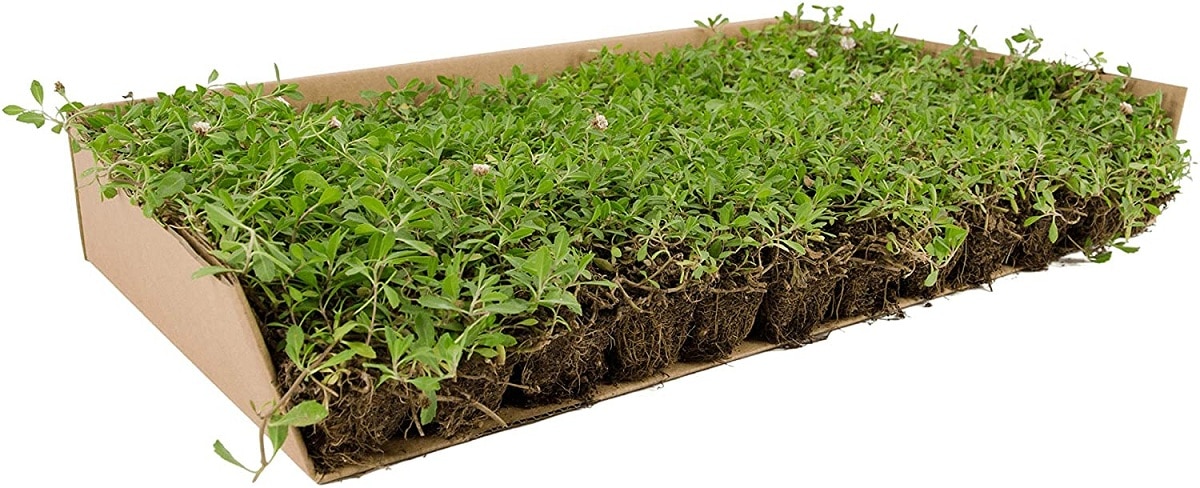
If you have a garden but the lawn is not your thing and you don't want to worry about all the care it needs, but you don't want to stop enjoying a very green garden, don't worry because we have the solution for you: Lippia nodiflora in winter. This perennial is also known as Carpet Bella or Lipia because it covers the ground and is the perfect replacement for a classic lawn. Forget so much maintenance and keep looking for this great option with a beautiful garden.
In this article we tell you everything you need to know about the care of the Lippia nodiflora in winter and what requirements do you need.
Key features

In order for you to better understand the care and needs of the wild lotus flower, we are first going to explain the properties of this plant. This will make it easier for you to take care of it and make your garden look spectacular.
In the Verbena family, which includes the genus Verbenaceae, consists of about 200 species of shrubs that originate in the tropical and subtropical regions of the Americas and Africa. Specifically, this species is from Central America.
Besides Bella Carpet and Lipia, it is also known for its scientific synonyms of Phyla Nodiflora and Lippia Canescens.
It is a plant cover that spreads along the ground, taking root as it spreads. Lipia is a plant that barely reaches 10 cm from the ground, but as it develops rapidly covering the ground, its elongated stems can reach between 30 and 90 cm.
It has small oval green leaves with jagged edges. In winter they turn reddish, which makes the plant lose its ornamental power a bit, since the color does not show as well as at other times of the year.
Lippia nodiflora has a large number of small, fragrant flowers appearing in concentrated flower clusters. They are usually white with a yellow center and are about 2,5mm in diameter. These plants bloom from mid-spring to late summer. However, the Lippia nodiflora in winter it can also serve as a lawn.
An important point to note about this species is that due to its sweet nature this means it can keep bees on and off. This is great for pollination, but not so good if you are scared of them or if there are children playing in the garden nearby.
They are a great choice for gardens and cities on the Mediterranean coast due to their high resistance to pollution. In addition, it supports constant trampling well, and its longitudinal growth is quite fast, and it can be an invasive plant.
Cultivation of Lippia nodiflora in winter

Now that you know the properties of Lipia, you have seen that it is a fairly resistant plant and that it does not require even half the care of the lawn. Take note of what you read below to have a healthy wildflower plant that shines in all its glory.
This type of ground cover It is used for rockeries, to repair slopes and to cover dry areas of gardens or paths.. It prefers temperate climates with mild winters, so it is normal to see it in gardens in the Mediterranean region, even if they are near the sea, as it supports saline environments well. It is a frost resistant plant and loses leaves from -5ºC.
A beautiful carpet that will grow best in full sun, although it can also be in partial shade. If you decide to plant it in a sunny spot, keep in mind that it needs more watering.
On the subject of watering, it is not a demanding plant in this sense and can withstand prolonged droughts, but it will always have more leaves and look better if it is watered regularly. Especially in summer, it is recommended to water the plants at least every 10-15 days.
As for the ground, Lippia nodiflora in winter it is not very demanding and tolerates different types of soil (even limestone) as long as it is well drained. In addition, it does not require any subscription. However, it is recommended to use a slow-release fertilizer in spring to help the plant to better withstand the cold season and to be able to endure the whole winter without problems.
It is recommended to plant the Lipia in autumn or spring, although it can withstand the winter well. 5 to 15 seedlings can be planted per square meter. If you want a higher density, plant 10 to 12 plants, leaving very little space between them, so you can quickly achieve a carpet effect. Also, doing this will make it easier to see any weeds that may be growing and get rid of them more easily.
First of all, you should keep an eye on the plants and water them more often than usual until they are fully rooted. From then on, you can reduce the frequency of watering. It is important that you never place an anti-weed mesh, since the plant needs soil to expand through it, and thus it will not be able to.
Pruning and diseases of the Lippia nodiflora in winter

Finally, when it comes to pruning, it is recommended to mow once a year in case the kaleidoscope exceeds 10 cm in height. Normally, though, when it stretches, it stretches to the ground.
It is a plant very resistant to diseases and pest attacks. Also, there are usually no serious diseases that can cause plants to wilt. Nevertheless, depending on where it is grown, it may be susceptible to aphids or fungi.
Aphids are small insects that suck sap from stems. They are very dangerous as they are very reproductive and can even kill the Lippia nodiflora. To get rid of aphids, a mixture of biodegradable soap and water is recommended.
Excessive moisture in the substrate and high ambient humidity can cause fungal disease Ranunculus florida. Prevention and maintenance help prevent fungal attack. It is advisable to follow up and pay close attention to the weakening of the neck, wilting of roots and plants, as these are symptoms of the disease.
Without a doubt, after seeing how easy it is to take care of the Lippia nodiflora in winter and how good it is for a low maintenance or sustainable garden, you will definitely consider adding this wonderful plant to your garden. It's perfect for imparting natural magic to lawns, covering slopes, planting between slabs to create airy pathways, and even on stairs.